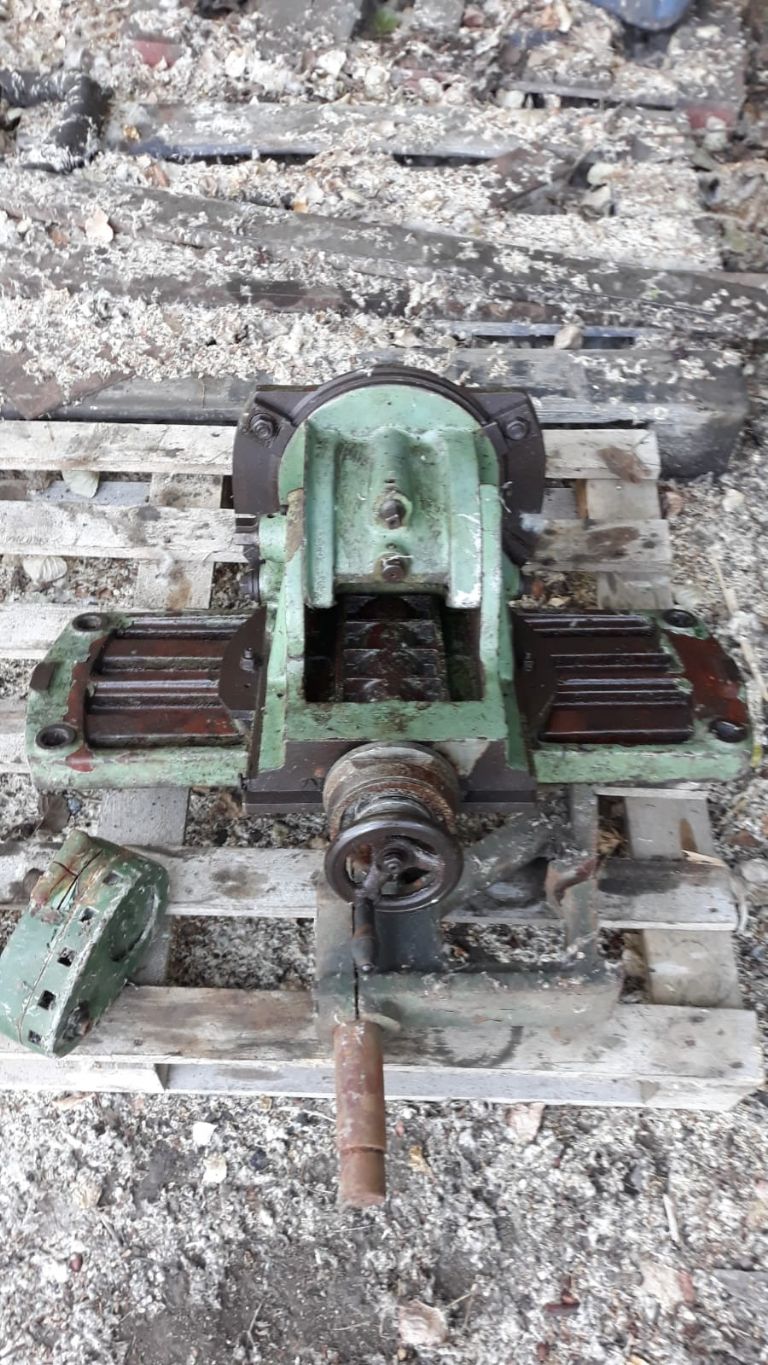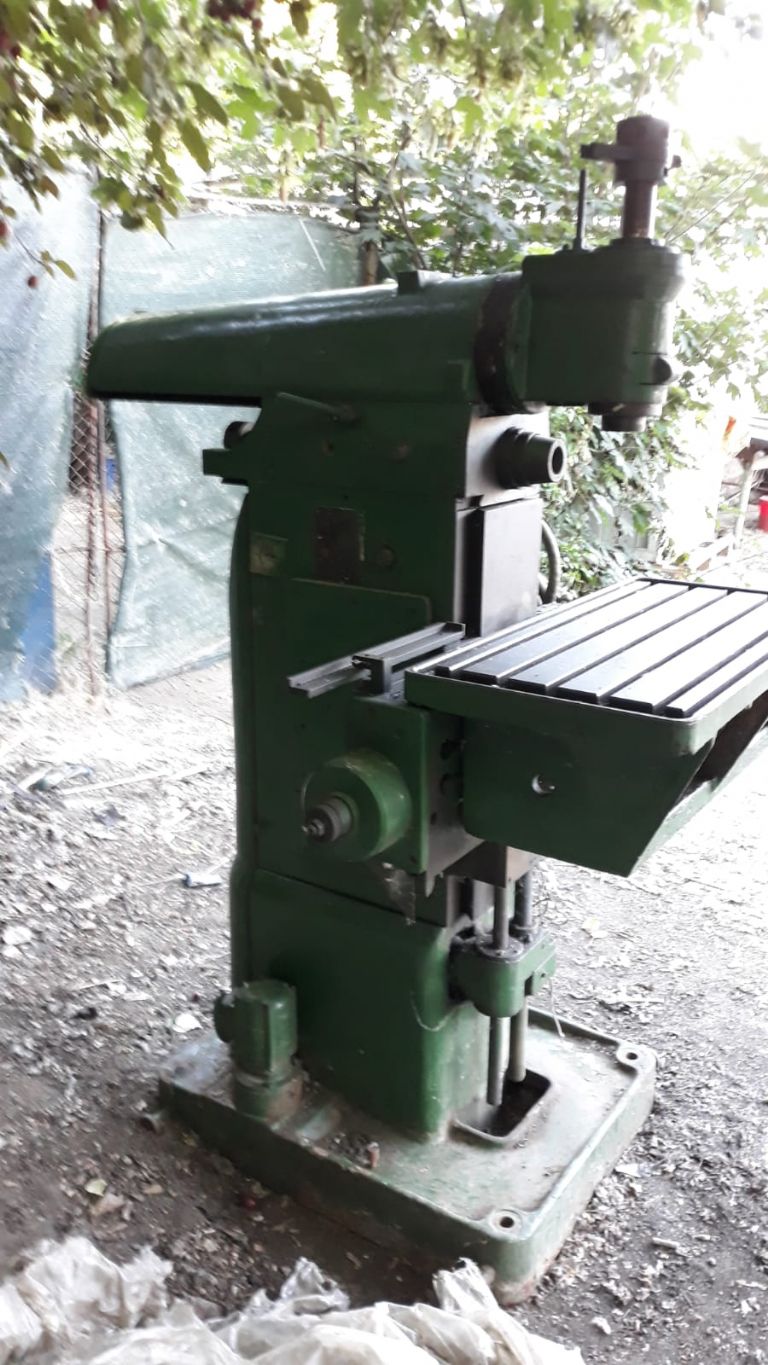Assuming the ways and lead-screws are not too badly worn, that milling-machine looks as if it could be a very good and useful, but power-hungry, machine. It seems to have been cared for.
In some respects the motor's condition is less important because that can be replaced relatively easily (though not cheaply) with a modern 3-ph motor and VFD.
The extension of the "top part" beyond the table is to allow it to support the horizontal-milling arbor without encroaching on the table area. There should be with this machine, that arbor and its supporting drop-bracket, which would to have dovetails to fit those on the underside of the ram.
What I have just noticed further, is that the head is in two parts: the ram is carried on a lower part that itself can be moved back and forth. I am guessing this is allied to using the machine with….
…. that separate table. As I believe it is, to fit on the knee so its working surface is vertical, rather like a super-sized angle-plate. Looking at the other photos, it does seem the table on there at present is carried on a separate slide so can be swapped.
Looking back again, there seems no in-out travel for the table itself. Instead the head is moved. I am not sure how that affects milling round an outline like a rectangle, but I've a suspicion the machine's primary use is as a horizontal mill, where all the cutting is longitudinal.
I mentioned "the" motor. It might have more than one – the spindles, obviously, but others for power feed and table rise-&-fall.
.
You'd need an overhead hoist or other handling equipment, perhaps a dedicated trolley, to swap the tables safely.
I looked carefully but could not see a maker's name on it, but I think Deckel and Aciera are two makes with this interchangeable table system.. Try to identify it then see what Tony Griffith's lathes.co site has to say about it.
Dave Wootton.
















